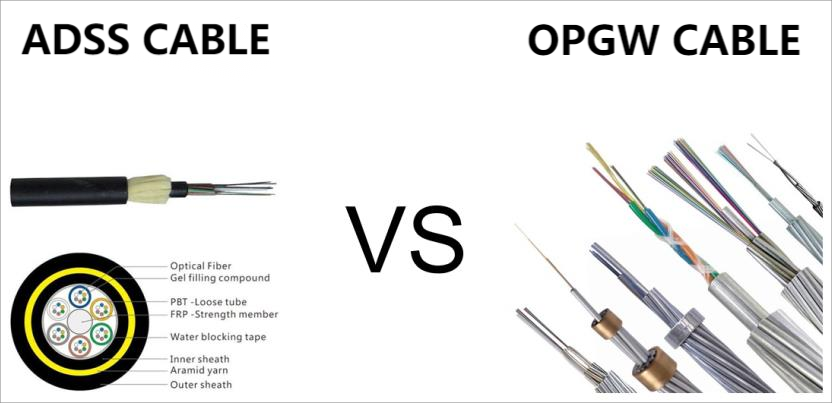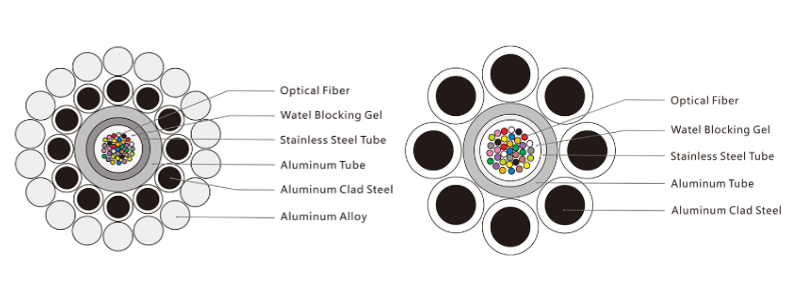Among the OPGW optical cables used in my country's power system, two core types, G.652 conventional single-mode fiber and G.655 non-zero dispersion shifted fiber, are the most widely used. The characteristic of G.652 single-mode fiber is that the fiber dispersion is very small when the operating wavelength is 1310nm, and the transmission distance is only limited by the attenuation of the fiber. The 1310nm window of the G.652 fiber core is usually used to transmit communication and automation information. G.655 optical fiber has lower dispersion in the 1550nm window operating wavelength region and is usually used to transmit protection information.
G.652A and G.652B optical fibers, also known as conventional single-mode optical fibers, are currently the most widely used optical fibers. Its optimal working wavelength is the 1310nm area, and the 1550nm area can also be used. However, due to the large dispersion in this area, the transmission distance is limited to about 70~80km. If long-distance transmission at a rate of 10Gbit/s or above is required in the 1550nm area, , dispersion compensation is required. G.652C and G.652D optical fibers are based on G.652A and B respectively. By improving the process, the attenuation in the 1350~1450nm region is greatly reduced, and the operating wavelength is extended to 1280~1625nm. All available bands are larger than conventional single-mode fibers. Fiber optics increased by more than half.
G.652D fiber is called wavelength range extended single-mode fiber. Its properties are basically the same as G.652B fiber, and the attenuation coefficient is the same as G.652C fiber. That is, the system can work in the 1360~1530nm band, and the available working wavelength range is G .652A, it can meet the development needs of large-capacity and high-density wavelength division multiplexing technology in metropolitan area networks. It can reserve huge potential working bandwidth for optical networks, save optical cable investment and reduce construction costs. Moreover, the polarization mode dispersion coefficient of G.652D fiber is much stricter than that of G.652C fiber, making it more suitable for long-distance transmission.
The performance essence of G.656 fiber is still non-zero dispersion fiber. The difference between G.656 optical fiber and G.655 optical fiber is that (1) it has a wider operating bandwidth. The operating bandwidth of G.655 optical fiber is 1530~1625nm (C+L band), while the operating bandwidth of G.656 optical fiber is 1460~1625nm (S+C+L band), and can be broadened beyond 1460~1625nm in the future, which can fully tap the potential of the huge bandwidth of quartz glass fiber; (2) The dispersion slope is smaller, which can significantly reduce the dispersion of the DWDM system Compensation costs. G.656 optical fiber is a non-zero dispersion shifted optical fiber with a dispersion slope of basically zero and an operating wavelength range covering the S+C+L band for broadband optical transmission.
Considering the future upgrade of communication systems, it is recommended to use optical fibers of the same subtype in the same system. From the comparison of multiple parameters such as chromatic dispersion coefficient, attenuation coefficient, and PMDQ coefficient, in the G.652 category, the PMDQ of G.652D fiber is significantly better than that of other subcategories and has the best performance. Taking into account cost-effective factors, G .652D optical fiber is the best choice for OPGW optical cable. The comprehensive performance of G.656 optical fiber is also significantly better than that of C.655 optical fiber. It is recommended to replace G.655 optical fiber with G.656 optical fiber in the project.



